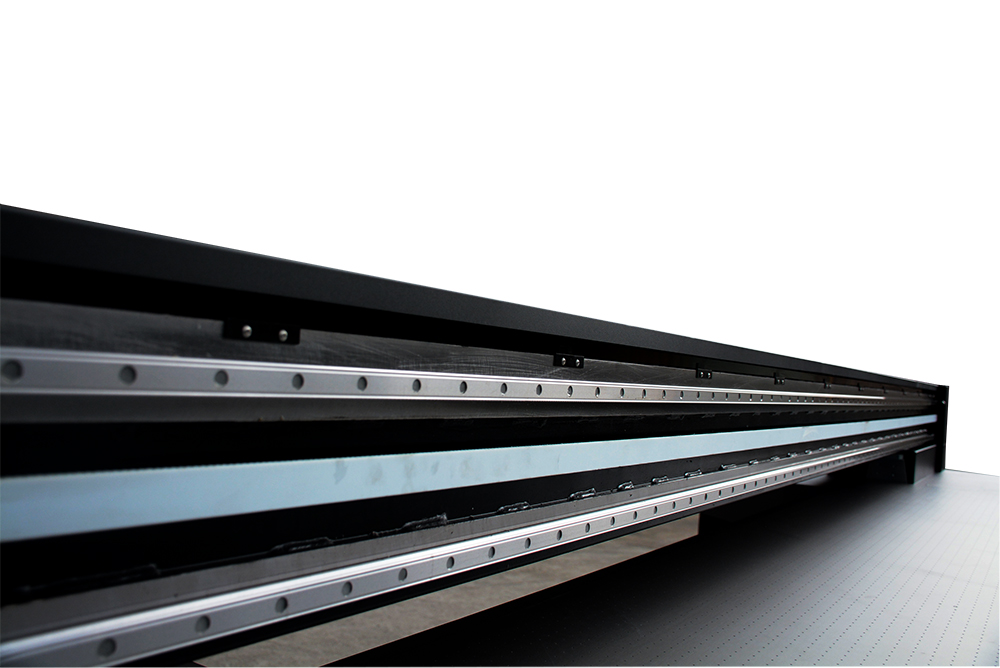How to Set Up a UV Flatbed Printer for Optimal Performance?
How to Set Up a UV Flatbed Printer for Optimal Performance?
UV flatbed printers have revolutionized the printing industry, offering unparalleled versatility and precision in producing high-quality prints on various materials. These printers utilize UV-curable inks that cure instantly when exposed to ultraviolet light, resulting in durable and vibrant prints. However, achieving optimal performance with a UV flatbed printer requires careful setup and maintenance. In this comprehensive guide, we will walk you through the essential steps to set up your UV flatbed printer for optimal performance.

1. Understanding Your UV Flatbed Printer
Before diving into the setup process, it’s crucial to familiarize yourself with the specifics of your UV flatbed printer. Different models may have unique features, requirements, and workflows. Start by thoroughly reading the manufacturer’s manual and any accompanying documentation. Understand the printer’s specifications, such as its maximum print size, ink types, and supported materials.
2. Ensuring Proper Installation
Proper installation is the foundation of optimal printer performance. Follow these steps for a successful setup:
Location: Choose a clean, dust-free, and well-ventilated area for your printer. Ensure the room has a stable temperature and humidity to prevent ink curing issues.
Leveling: Use a spirit level to ensure the printer is installed on a flat and stable surface. An uneven base can lead to print quality problems.
Electrical Connections: Connect the printer to a dedicated power supply that meets the manufacturer’s specifications. Avoid using extension cords or power strips.
Ink and UV Lamp Installation: Carefully install the ink cartridges and UV lamps according to the manufacturer’s instructions. Handle the UV lamps with care, as they are delicate and can be easily damaged.
3. Software and Driver Installation
Once the printer is physically installed, proceed with the software and driver installation:
Driver Installation: Install the printer drivers on your computer. This enables seamless communication between your computer and the printer.
Print Management Software: Install the printer’s dedicated print management software. This software often includes features for color management, print job queuing, and printer status monitoring.
Updates: Check for any available software or driver updates. Manufacturers often release updates to improve printer performance and fix known issues.
4. Media and Ink Preparation
Preparing your media and ink correctly is vital for achieving high-quality prints:
Media Selection: Choose the appropriate media for your print job. UV flatbed printers can print on a wide range of materials, including glass, metal, plastic, and wood. Ensure the media is clean, dust-free, and compatible with your printer’s specifications.
Ink Preparation: Shake the ink cartridges gently before installation to ensure the ink is evenly distributed. Some printers may require you to prime the ink system before starting your first print job.
5. Calibration and Testing
Proper calibration is essential for achieving consistent and accurate prints:
Printhead Alignment: Use the printer’s built-in alignment tools to ensure the printheads are correctly aligned. Misaligned printheads can result in banding or blurred prints.
Color Calibration: Perform a color calibration test to ensure accurate color reproduction. This process involves printing a test pattern and adjusting the color settings in the print management software to match the desired colors.
Test Print: Print a test image or pattern to assess the print quality. Examine the print for any issues such as banding, blurring, or ink curing problems.
6. Workflow Optimization
Optimizing your workflow can significantly enhance printer performance and efficiency:
File Preparation: Ensure your print files are optimized for UV flatbed printing. Use high-resolution images and vector graphics for the best results. Convert all text to outlines to prevent font substitution issues.
Print Queue Management: Utilize the print management software to efficiently manage your print jobs. Prioritize jobs based on urgency and print complex jobs during off-peak hours to avoid slowdowns.
Regular Maintenance: Establish a regular maintenance schedule to keep your printer in top condition. This includes cleaning the printheads, checking the ink levels, and replacing worn-out parts such as the UV lamps.
7. Safety Considerations
UV flatbed printers require special safety considerations due to the use of UV-curable inks and UV lamps:
UV Exposure: Wear appropriate protective gear, such as UV-blocking gloves and eyewear, when handling UV-curable inks or working near the printer during operation.
Ventilation: Ensure the printing area has proper ventilation to dissipate any fumes from the UV-curable inks.
Fire Safety: Store ink cartridges and other flammable materials in a fire-safe cabinet or area. Keep a fire extinguisher nearby in case of emergencies.
8. Troubleshooting and Support
Even with proper setup and maintenance, issues may arise with your UV flatbed printer. Here are some common troubleshooting steps:
Print Quality Issues: Check for clogged printheads, low ink levels, or media contamination. Clean the printheads and replace low ink cartridges as needed.
Curing Problems: Ensure the UV lamps are functioning correctly and replace them if necessary. Adjust the printer’s curing settings based on the manufacturer’s recommendations for the specific media and ink.
Software Issues: Restart the printer and computer if you encounter software-related problems. Check for software updates and reinstall the drivers if necessary.
Manufacturer Support: If you are unable to resolve an issue, contact the printer manufacturer’s support team for assistance. Provide them with detailed information about the issue and any error messages displayed on the printer or computer.
In conclusion, setting up a UV flatbed printer for optimal performance requires careful attention to detail and a thorough understanding of the printer’s specifications and capabilities. By following the steps outlined in this guide, you can ensure your UV flatbed printer produces high-quality prints consistently and efficiently. Remember to prioritize safety, maintain your printer regularly, and seek professional support when needed to keep your printer running smoothly.
